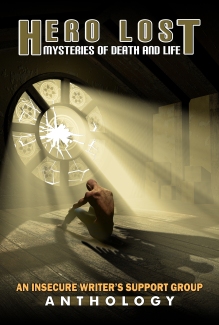Sequencing human interaction #AuthorToolboxBlogHop

The Author Toolbox Blog Hop is “a monthly blog hop on the theme of resources/learning for authors: posts related to the craft of writing, editing, querying, marketing, publishing, blogging tips for authors, reviews of author-related products, anything that an author would find helpful.” Want to jump into the writing tool box? Search #AuthorToolboxBlogHop or to join via blog, click here.
Thank you Raimey!
***
When we speak, a series of steps has already occurred:
- An external action
- An emotional reaction
- A thought blooms from the above mentioned steps.
The result is return dialogue or reactive action.
It’s human nature.
Writing scenes and paragraphs should ideally follow the same logic we use when we speak or react.
Writer’s Digest suggests: “… get your reader to invest emotionally in your character, and you’ve laid the foundation for every action scene.”
A year ago, I came across a writing article on sequencing sentences. I hadn’t thought about the pattern of action, emotion, thought and reaction. I didn’t know how much it mattered until I wrote for it. I wish I could find the article and share it today. *Big shoulder sigh.* I lost it in the move to my new home over the summer.
Consider two examples:
Example One
The moment Henry stepped out of the door of his apartment complex, he shivered with a chill then violently sneezed three times. With his shoulders arched up, he froze under the awning. Germs. He hated them. They hated him. Or at least he’d pictured it as an even exchange to survive.
Henry’s hand trembled as he reached into his back pocket for his hand sanitizer, but stopped short with his thumb resting on the ridges of the cap. Something in the wind drew him. A cry so soft it couldn’t be a man or woman. A lamb? No, not in L.A.
He listened, shuffling down another couple of steps to the paved walkway.
There. In the shadows. The barely there cry came again.
Example Two
The moment Henry stepped out the door of his apartment complex, he shivered with a chill then violently sneezed three times. He removed his sanitizer from his back pocket and shuffled down the steps. Cars zoomed past the street. The wind tickled his nose. He shuffled backwards and peered around the corner of the building. He swore he heard a sound. A cry. Soft, like a lamb, urgent and hungry.
What’s Different?
In the first example, Henry is moving, leaving his apartment when an outside irritant stings his nose and he sneezes (external influence/action). He hates sneezing (thinking). He reacts to his phobia of germs and reaches in his pocket for his hand sanitizer (result of what we are thinking).
In the second passage, we go from action to action to action. We miss a point about the character. We miss his phobia. We miss the connection between the first action and the second action. Then we miss the reason why he turned and went back to the building.
So as we write, don’t forget motive, intention, and the process which leads our characters into action. Write for logic and sequence.

Posted on April 18, 2018, in Uncategorized. Bookmark the permalink. 42 Comments.




Great post and great examples 🙂 The first one brings the scene to life so much more!
Thank you Louise. I’m not sure if they were the best, but I thought I’d give it a shot at the differences. I appreciate you stopping in today 🙂
A great reminder 🙂 Thanks for sharing.
Ronel visiting from the Author Toolbox blog hop. Latest post at Ronel the Mythmaker
Thank you for stopping in today Ronel 🙂
The first one definitely has more impact. Breaking it up into several paragraphs also helps.
Thank you Alex. I appreciate your feedback 🙂
I like this a lot because it is easy to remember and apply. Action, emotion, thought & reaction– got it!
Thank you for kind reflection 🙂
I love posts that give examples. It’s so much easier to remember the tip.
I appreciate your feedback Kristina. I was so nervous to provide one but will try to continue to do so on the future.
The first example is much better–it paints Henry exactly as he is, a germaphobe. In the second example I would just assume he has a cold.
Thank you for reflection Megan. It always makes me nervous to provide examples 🙂
Great examples – it really helps to illustrate the tip. Love that Michener quote too.
I was so nervous about illustrating the tips. Maybe it’s because I am writing to this most skilled audience 🙂
Excellent tip and example! There is just so much to this writing stuff. I learn something new every day.
Me too Elizabeth 🙂 I am always happy to hear your thoughts 🙂
Reactions, internal and external, really do introduce us to the characters. 🙂
Anna from elements of emaginette
Thank you Anna. I think we get so caught up showing and not telling it’s easy to forget 🙂
It’s always about the why, the internal. Why does what happens in the present story action matter to your character? A great post. Thanks, Erika!
http://victoriamarielees.blogspot.com
Thank you for stopping in Victoria 🙂
Action to action is a lot like telling.
I hadn’t thought of it that way. Thank you Diane 🙂
Adding reactions, physical cues, and inner dialogue can really make a difference.
Thank you for stopping in Chrys 🙂
Good advice. When inspiration strikes, I write fast, putting in dialogue, then going back and adding thoughts and action. We have to remember to think of the reader and clue her in to the logic of the scene.
I like that Cheryl. Thank you so much 🙂
Great post, Erika. I know most of my proto-draft is action to action. I go back and layer in the character building, world building, and most of the description. I do most of the structuring instinctively, but I will definitely take a look again and see if I am following this pattern. I am really curious about that article now. If you remember it, I would love to know what it was.
I am so curious too! It was fantastic. It had the perfect formula and Changed my outlook on paragraph structure 🙂
Excellent tips and advice! Thanks for sharing!
Thank you for stopping in today 🙂
What a stark difference between the paragraphs. Great example, Erika, and a sequence that I hadn’t actually thought about before. Now I have to run back to my WIP and see if I’ve been lucky. Ha ha. Thanks for the great tip!
I am happy I could help. I get so nervous writing examples. Thank you for
Stopping in today my friend 🙂
I’m definitely not getting the same emotional connection to the second example. Love how you pointed all this out. I hadn’t heard this before. Thanks!
Thank you for stopping in Raimey. I am happy I could help 🙂
Great reminder and examples! Thanks for sharing 🙂
Thank you for stopping in Hoda. Have a lovely weekend 🙂
Great set of examples. It’s a really subtle thing, but also very important. As with many things, I think it’s easy to miss if someone doesn’t point it out through contrast. Ironically I often learn more from reading weaker stories, realizing through absence what goes into a great story.
Thank you for sharing.
Thank you for your reflections Adam. Have a great week 🙂
Excellent point about understanding the reasons behind character actions. We as authors need to be sure that we let the readers in on the secrets!
Excellent reminder! Thank you for sharing!
Thank you so much for stopping in 🙂
What a great tip for writers. Thank you for the examples to help explain what you mean. I recently have been checking my writing for reactions of my characters. This plan brings even more richness to the writing. Going to share this with my writing group. Thank you.
JQ Rose